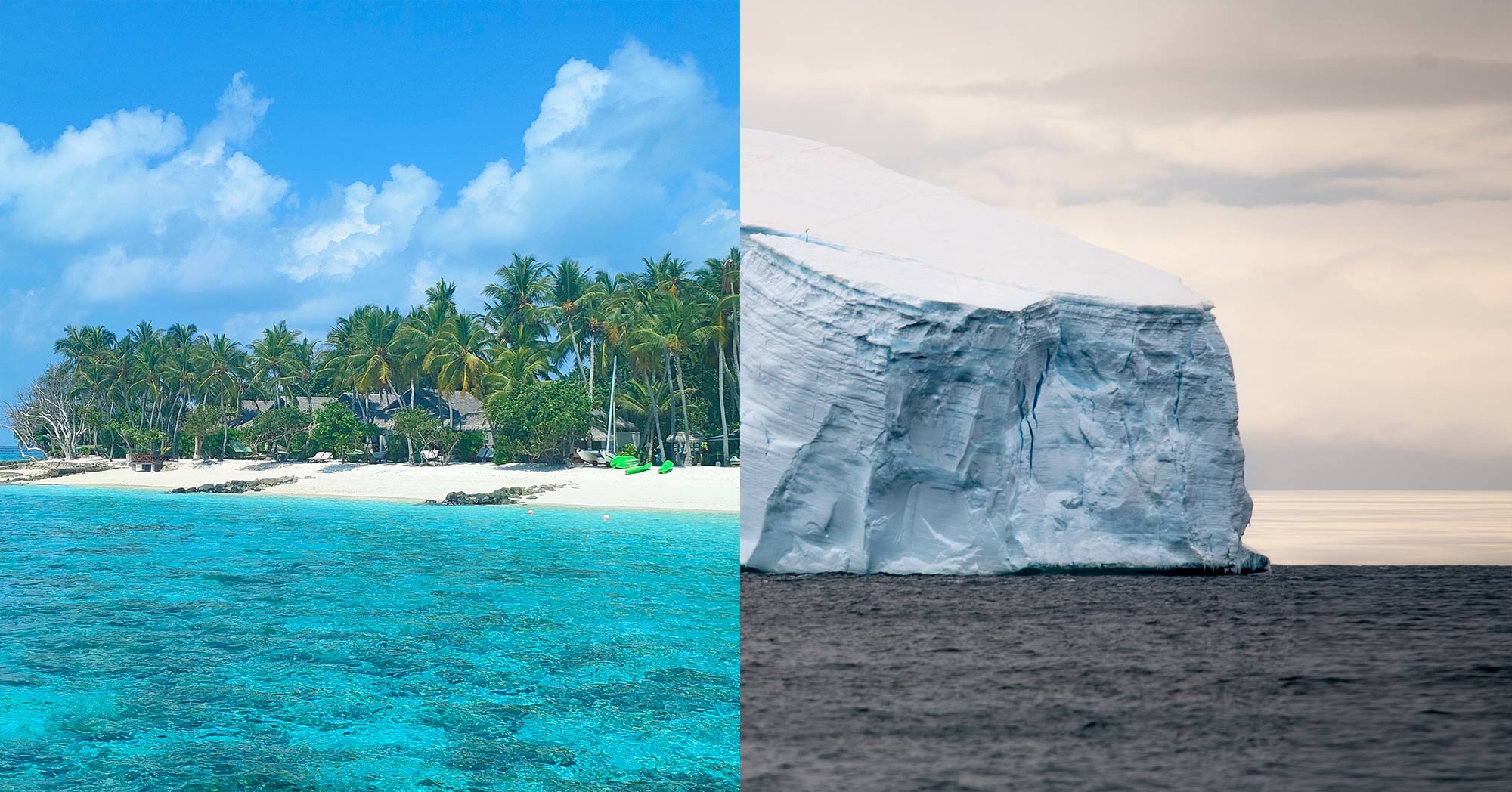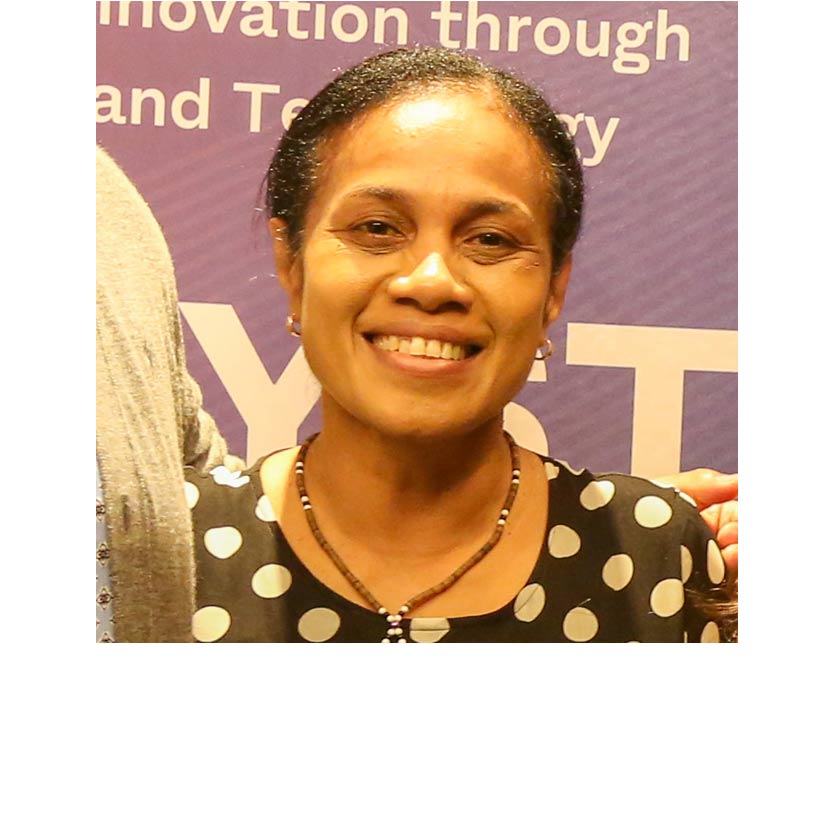A New Era of Innovation in the Pacific Islands
Combining Tradition and Technology on the Frontlines of Climate Change
What is the world's most critical region for climate innovation right now?
There are many good answers to that question. Still, one that might be at the top is a place where the real impact of new solutions can do the most good the most quickly, and where innovators need the agency to tackle these challenges head-on more than ever. Many would say that there's one place that fits this description best: the Pacific Islands.
Climate change is being felt here more rapidly than anywhere else in the world. Many islands are low-lying, rising only a few feet above sea level, and are threatened with flooding, coastal erosion, and storm surges. Almost every climate prediction for the next 50 years has devastating repercussions for these islands, making them the highest priority for implementing solutions.
This region provides essential opportunities for testing and refining adaptation responses at scale, and with the Pacific Islands being home to species found nowhere else on earth and the incredible diversity of their ecosystems, geography, and demographics, it can't come soon enough. But these islands, and the 2.3 million people who make up their cultures, are more than just the frontline. They are the source of extraordinary solutions.
Pacific Islanders are leading climate action at the local level, implementing strategies to help communities and ecosystems be more resilient to climate change. These cultures have lived with natural environmental impacts for thousands of years and have adapted practices to accommodate periods of environmental fluctuations. This indigenous knowledge, recognized as an essential pillar of climate change response, is being carried by a new generation combining it with science and technology development, crafting novel solutions, and building new processes that are a model for the whole world.

What role will renewable energy have in the Pacific Islands?
We're inspired by some of the incredible adaptations, innovations, and collective strategies being built and utilized throughout the Pacific. On so many fronts, innovation is taking the lead.
One of particular importance is energy- currently, 10% of the GDP of Pacific Island countries funds imports of petroleum products, but in some cases, this figure can exceed 30%. In addition to high fuel transport costs, this reliance on fossil fuels leaves Pacific economies vulnerable to volatile global fuel prices and potential spills by oil tankers.
As a result, many Pacific Island countries are rightly convinced that renewable energy will play a role in their continuing socio-economic and technological development. In Fiji, Papua New Guinea, Samoa, and Vanuatu, renewable energy sources already represent increasingly significant shares of the total electricity supply: 60%, 66%, 37%, and 15%, respectively.
There's still a way to go- renewable energy represented less than 10% of total energy use in the 22 Pacific Island countries and territories in 2015. The Secretariat of the Pacific Community observed that 'while Fiji, Papua New Guinea, and Samoa are leading the way with large-scale hydropower projects, there is enormous potential to expand the deployment of other renewable energy options such as solar, wind, geothermal and ocean-based energy sources.' There are several projects to develop renewable energy in the Pacific island states, including initiatives like the Pacific Centre for Renewable Energy and Energy Efficiency, designed to promote business development centered on sustainability, and national initiatives like the Vanuatu Green Energy Fund and Fiji's Rural Electrification Fund, which are establishing a right to sustainable electrification for rural communities through the dissemination of solar panels and sustainable energy technologies.

What exactly is this new sustainable energy going to fuel?
A mosaic of regional and national initiatives is working to ensure it continues to develop the meteoric rise of science and technology innovation.
Blueprints for the subregion's sustainable development include the Samoa Pathway, the action plan adopted by countries at the third United Nations Conference on Small Island Developing States in 2014. The action plan’s primary areas of focus include sustainable consumption and production, energy, tourism and transportation, climate change, and protecting the environment on both land and sea- all critical to mitigating disaster risk and fostering sustainable development. In addition to regional plans such as the Samoa Pathway, the Pacific has seen national efforts like Papua New Guinea's National Vision 2050, which led to the establishment of the Research, Science, and Technology Council, an effort focused on developing emerging technologies, science and engineering education, and working towards the investment of 5% of the national GDP into research and development by 2050.
Pacific countries are reshaping their social and economic environments to meet growing digital demands. In benefiting from modern digital and other technological tools, regulatory bodies have adopted social media platforms and messaging systems in official protocols to disseminate disaster warnings, weather forecasts, and information on climate change. Mobile internet penetration was the lowest (18%) of any region in the world in 2018 but this figure is expected to double by the end of 2023. In this remote region, high-speed Internet access comes from laying an expensive undersea cable, with recent links being created for Papua New Guinea (2020), the Solomon Islands (2020), and Tonga (2018).
The World Bank's Digital Development Specialist, Shivnesh Prasad, has described that one of the critical challenges in the Pacific is that populations are scattered. "Cables in this context are a lifeline, as investment into satellite technology is expensive," Prasad said. "The cable systems in the Pacific have now reduced the cost of doing business and have encouraged competition, and ultimately the uptake of technology."
All of this deepened connection, and the incredible investment behind it, is empowering incredible and novel solutions from the cultures and people who understand these challenges most deeply.
How are Pacific Islanders uniquely qualified to address issues affecting the ocean?
Leveraging the Pacific tradition of talanoa–inclusive, participatory, and transparent dialogue for decision-making for the greater good–is working to make sure these developments have an equitable and meaningful impact for the most vulnerable.
As a result, technology is merging with tradition in extraordinary ways. Pacific Islanders have lived with natural environmental impacts for thousands of years and have adapted methods to accommodate periods of environmental fluctuations. Although the pace of environmental and climatic changes has increased, many communities are implementing climate-smart agriculture and are revitalizing traditional practices that utilize drought-tolerant species and the benefits of nature, such as using seaweed as compost to make the soil more fertile, using palm fronds to shade plants during droughts, and planting vegetation to reduce flooding and erosion along coastlines.

A Hawai'ian fishpond being restored. Fishponds were developed in response to growing populations and overfishing of local reefs. The pond allows smaller fish in where they grow too large to escape. Such projects became the work of whole communities to maintain. Hawai'i Pacific University.
They are also combining these traditional practices with new scientific advancements, such as developing salt-tolerant and heat-tolerant crops and specifically in the Marshall Islands, community-led GIS mapping of breadfruit trees vulnerable to climate impacts. Communities are revitalizing traditional wells, establishing new protected areas and improving the management of existing protected areas, and developing climate-smart development plans that incorporate ecosystem-based adaptation. Leveraging traditional systems like pwaww (or mechen, in the Chuuk language), which has long been used for navigating local water and reef ownership, has enabled fishery and waters management that couples international standards and goals with localized techniques, allowing novel systems like "green buffers" of protected lands to take off and be successful.
Collectively, these efforts are a model for the world in connecting high-tech solutions with tradition and empowering those most affected to make the greatest difference.
“The information and technology sector cannot alone achieve change for the better-but with the right collaborations and synergies, whether it be people, technology, or processes-innovation can be developed and can contribute to meaningful societal development and advancement.
A key area that needs to be supported is leadership in driving innovation and the investment environment to support innovation through our nation’s education sector and the industry knowledge and exchanges. There needs to be more areas for access to seed capital, finance to invest in startups and entrepreneurs, innovators who are creating and or investing new ways of doing things or solving societal challenges.”
-Innovation Hub leader Priscilla Kevin (ICT Cluster Papua New Guinea)

What is GIST doing to empower Pacific Islanders to tackle these challenges?
In light of this, the GIST Initiative is proud to announce the launch of the Startup Training and Investment Summit: Pacific Islands, our emerging effort to support science and technology innovators, investors, and venture ecosystems across the Pacific Island nations, including Fiji, Kiribati, Marshall Islands, Micronesia, Nauru, Palau, Papua New Guinea, Samoa, Solomon Islands, Tonga, Tuvalu, and Vanuatu. This 4-day workshop, designed to accelerate venture development expertise with both regional innovators and investors, is our first event explicitly designed to focus on this essential region.
The GIST Initiative is just one part of a constellation of efforts by the United States and the Department of State. Fostering science and technology entrepreneurship across Asia-Pacific is a core strategic priority and one we are pleased to be part of. The island economies of the Pacific, in particular, deserve specialized programming as they are struggling with unique challenges, particularly in the face of climate change, at a scale unmatched globally. At the frontlines of these changes are cultures as special and unique as the islands they inhabit, with peoples who are combining science and technology with traditional perspectives and practices, building solutions and bridging past, present, and future in a way the entire globe can learn from. We are proud to work to build connections with these ecosystems, working to empower the innovators within them as they overcome obstacles and create solutions that are truly amazing, solutions that will take not only their communities into the next century but provide a model for sustainable and equitable development for the entire world.
Learn more about GIST's work across the Pacific and Asia with our Asia-Pacific Series page. The page explains the needs that the Pacific region faces and the role that science and technology entrepreneurship can take in addressing those needs. GIST's work in the Pacific is both long and deep and underscores our commitment to the people working on the front lines of innovation.